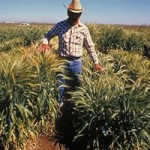By the 2030s, the results indicated that some regions in the United States and overseas could experience particularly severe conditions, with readings potentially dropping to -4 to -6 in much of the central and western United States as well as several regions overseas, and -8 or lower in parts of the Mediterranean.
By the end of the century, many populated areas, including parts of the United States, could face readings in the range of -8 to -10, and much of the Mediterranean could fall to -15 to -20.
Such readings would be almost unprecedented.

Dai cautions that global climate models remain inconsistent in capturing precipitation changes and other atmospheric factors, especially at the regional scale. However, the 2007 IPCC models were in stronger agreement on high- and low-latitude precipitation than those used in previous reports, says Dai.
There are also uncertainties in how well the Palmer index captures the range of conditions that future climate may produce. The index could be overestimating drought intensity in the more extreme cases, says Dai. On the other hand, the index may be underestimating the loss of soil moisture should rain and snow fall in shorter, heavier bursts and run off more quickly.
Such precipitation trends have already been diagnosed in the United States and several other areas over recent years, says Dai. “The fact that the current drought index may not work for the 21st century climate is itself a troubling sign,” Dai says.
Original Work:
Title of the Study: “Drought under Global Warming: A Review”
Author: Aiguo Dai
Published in Wiley Interdisciplinary Reviews: Climate Change
Click here to read Full Study:
About National Science Foundation (NSF)
The National Science Foundation (NSF) is an independent federal agency that supports fundamental research and education across all fields of science and engineering. In fiscal year (FY) 2010, its budget is about $ 6.9 billion. NSF funds reach all 50 states through grants to nearly 2,000 universities and institutions. Each year, NSF receives over 45,000 competitive requests for funding, and makes over 11,500 new funding awards. NSF also awards over $ 400 million in professional and service contracts yearly. For more information, visit www.nsf.gov.
Source: NSF Press Release dated October 19, 2010.













